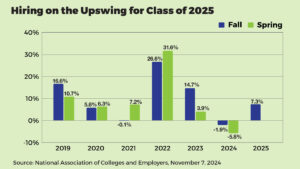The new tax plan has been the talk of the town for months, and it’s no wonder. The plan is changing how much of our hard-earned income many of us will hand over to the IRS in the years to come. In some cases, that difference will be significant. In others, not so much. And while how much you pay to the IRS is (or at least should be!) an important part of your overall financial plan, if you’re already retired or you are planning to retire soon, now is the time to take a close look at something that could have an even larger impact on your monthly income: changes to Social Security and Medicare.
Here’s a quick look at what’s actually changed this year:
The good news: The Social Security Cost of Living Adjustment (COLA) is increasing by 2%.[1] This may not sound like a whole lot, but it’s the largest increase in 6 years, and the second largest in the past decade. It’s a boost that everyone can appreciate.
The bad news: You may not see as much of that increase as you’d like. While the “Hold Harmless Provision” ensures that Social Security recipients never see a decrease in their net benefit (meaning Gross Social Security minus Medicare Part B payments), that doesn’t mean that previous premium increases won’t eventually catch up to you. Here’s why:
- The Hold Harmless Provision (HHP) prevented many people’s Medicare premiums from increasing much from 2016 to 2017. Even though Medicare Part B premiums increased from $104.90 to $121.80 per month in 2016, because Social Security did not see a COLA increase that year, HHP held Medicare Part B premiums to the old cost of $104.90 per month. Similarly, when Medicare Part B premiums increased from $121.80 to $134 in 2017, much of that increase was covered by Social Security’s 0.3% 2017 COLA.
- With previously enrolled recipients protected from the Medicare Part B premium hikes, the burden of those higher costs was passed on to new Medicare enrollees.
- The news gets worse for couples that earn more than $170,000 annually and are filing jointly. Welcome to the Medicare Income Related Monthly Adjustment Amount—or IRMAA—surcharge. This surcharge is determined by the IRMAA income brackets and is added to the monthly Medicare Part B premium.
So how does this change impact your 2018 Social Security benefit?
- If you were still paying close to the $104.90 for Medicare Part B, your premiums will increase to $134 as soon as your Social Security benefits increase enough to cover the difference without a reduction in your net benefit—effectively washing out most of the 2% COLA increase.
- If you recently enrolled or were already paying the $134 premium in 2017, because Medicare Part B premiums are not increasing in 2018, you should see the full 2% COLA in the coming year.
- Recent and soon-to-be retirees bear much of the burden of rising Medicare costs, not only because they are not protected by HHP, but also because the IRMAA surcharge is based on tax returns from two years prior. This means that if you retire on January 1, 2018, not only will you be paying the base Medicare premium of $134/month, but you may also be hit with a surcharge based on your 2016 tax return—when you were likely bringing in a much larger paycheck compared to your new retirement income.
Luckily, there is a way to potentially reduce those costs—and up your monthly take-home benefit—even if your 2016 income puts you in surcharge territory. This is important because the surcharge can be hefty depending on your income. If your Adjusted Gross Income (AGI) on your tax return is below $170,000 (for married, filing jointly), you won’t see any surcharge on your Medicare Part B premiums. But once you go over that $170,000 mark, the surcharges start coming in—and rising to as high as $295/month. That turns the typical Part B premium of $134/month into a whopping $428.60 every month. Here’s a snapshot of the 2018 AGI brackets and the resulting monthly premium, including the surcharge[2]:
- AGI: $0-$85,001 (single) and $0-$170,001 (married)
Medicare Part B Premium: $134/month/person - AGI: $85,001-$107,000 (single) and $170,001-$214,000 (married)
Medicare Part B Premium: $187.50/month/person - AGI: $107,000-$133,500 (single) and $214,000-$267,000 (married)
Medicare Part B Premium: $267.90/month/person - AGI: $133,500-$160,000 (single) and $267,000-$320,000 (married)
Medicare Part B Premium: $348.30/month/person - AGI: more than $160,000 (single) and more than $320,000 (married)
Medicare Part B Premium: $428.60/month/person
If your current income is lower than it was two years ago—either because you have since retired, or because of another life changing event such as the death of your spouse, divorce, work stoppage or reduction, or other loss of income—you can submit a Life Changing Event Form to appeal the surcharge using a detailed tax projection from your advisor or tax planner. In my own experience working with clients, it takes one to two months to receive a decision from the Social Security Administration. If your appeal is accepted, the change in premium is made retroactive to January 1 of the current year. That can put a pretty nice chunk of change back into your wallet where it belongs.
Even if you don’t have a qualifying Life Changing Event, you can still manage the surcharge by working with your advisor to keep your income within a certain AGI bracket. If you plan to pull money from your IRA to travel in the New Year, waiting until January to make your withdrawal could reduce your 2017 AGI and save you over $100/month. If you have a large amount of capital gains in a taxable account, consider donating securities instead of cash to help minimize your AGI. Your advisor will know which strategies are best suited to your unique situation.
Clearly, taxes play an important role in your net income, and the new tax plan is only part of the story. Whether you’re already retired or planning to take the leap in the next year or two, be sure to keep a close eye on the Social Security and Medicare brackets, and appeal the surcharge if it makes sense for you. Your trusted advisor can help manage all the pieces of the puzzle to help keep your taxes to a minimum and protect your Social Security income—no matter how the laws change in years to come.
[1] Source: https://www.ssa.gov/oact/cola/colaseries.html
[2] https://www.medicare.gov/your-medicare-costs/part-b-costs/part-b-costs.html
<div class=”







